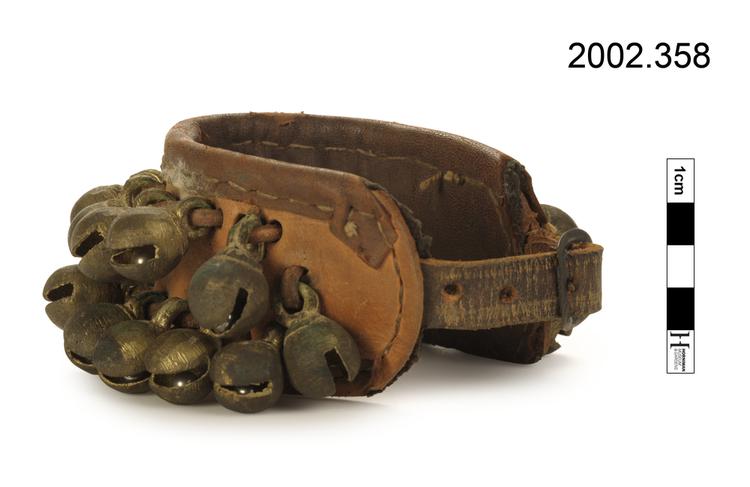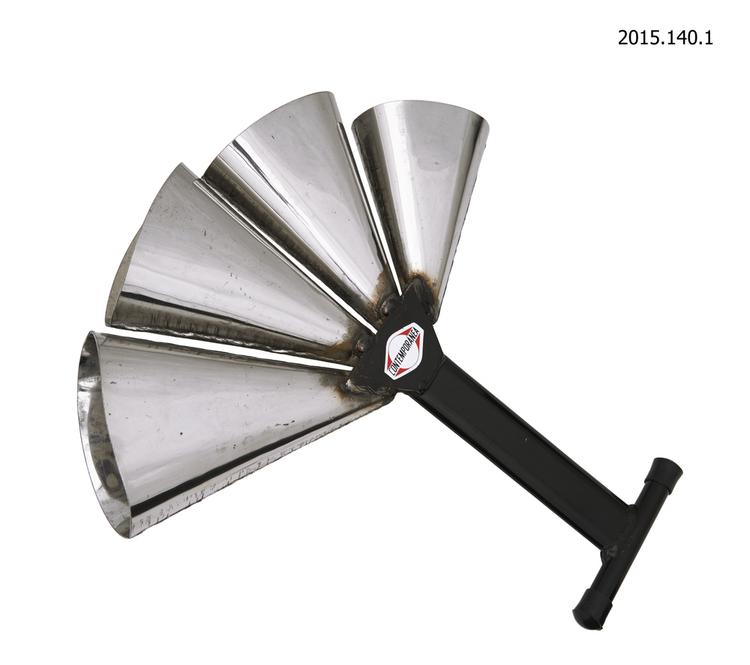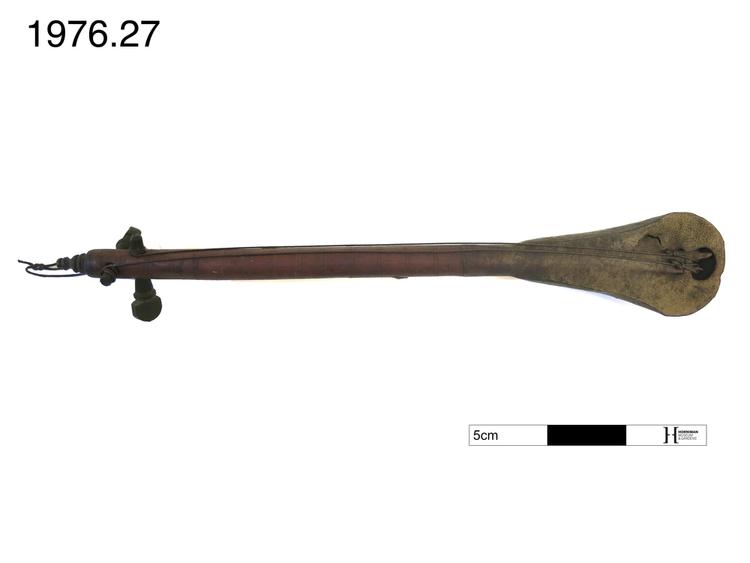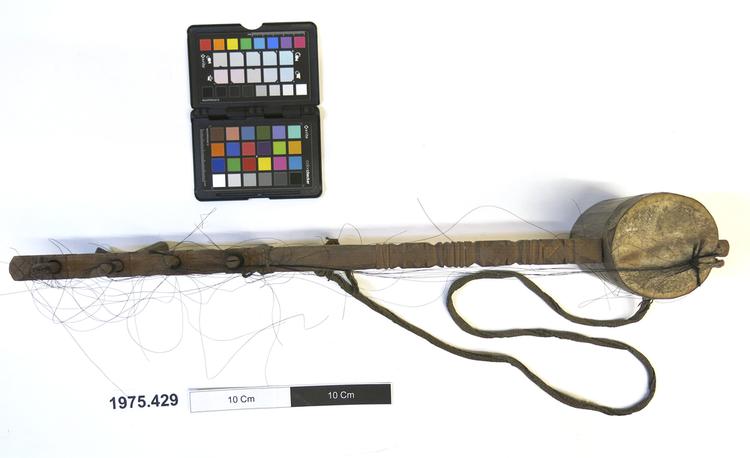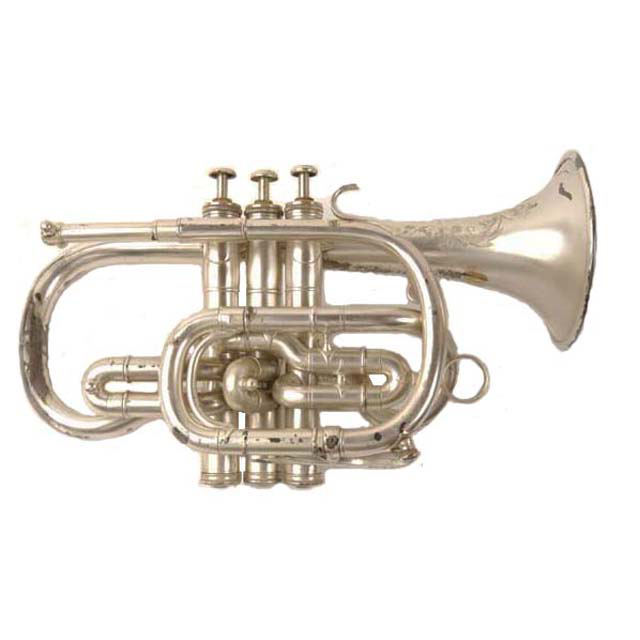
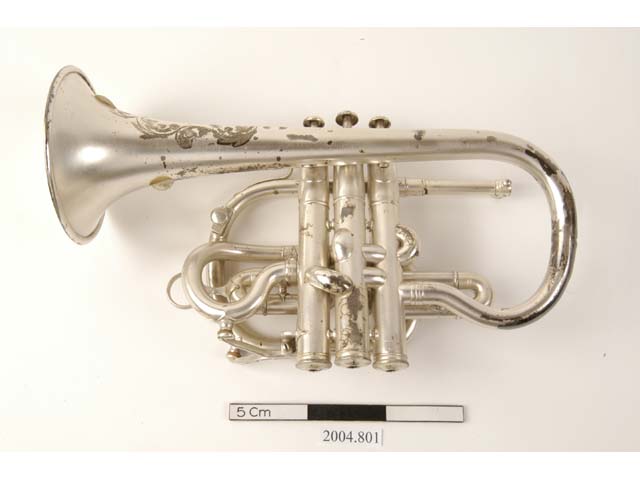
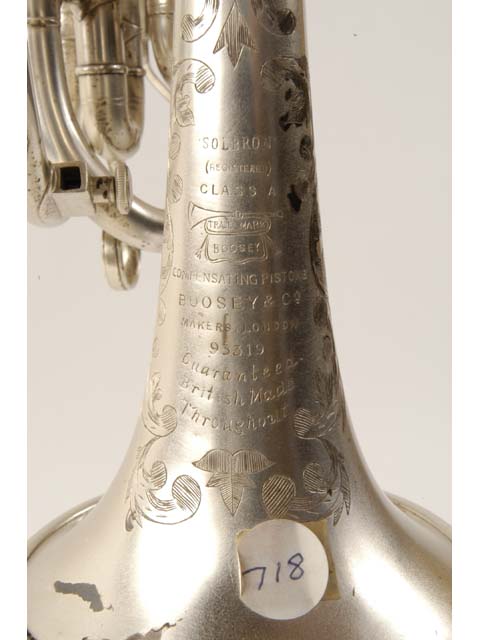
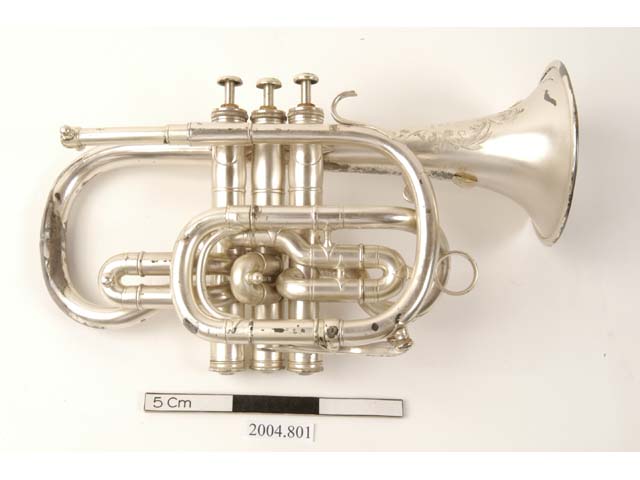
Cornet in B-flat, high pitch. Brass with frosted silver plating. The three Périnet valves are configured as a compensating system. The third valve loop returns to the first valve, and the first and second valves have supplementary loops, which are brought into play when used in conjunction with the third valve. Socket for music card holder. Double water key has two cups branching from one touchpiece. One shank. Mouthpiece missing. Stamp on bell reads: SOLBRON/(REGISTERED)/CLASS A/TRADE MARK/BOOSEY/COMPENSATING PISTONS/BOOSEY & Co./MAKERS.LONDON/93319/Guaranteed/British Made/Throughout. Bell design also includes historic trumpet and banner motif and floral decorations. Numbers 16, 17 and 18 stamped onto first, second and third valves respectively, and the number 2784 stamped on lower section of second valve casing.
Important developments were made in brass instrument design in the last decades of the 19th century with the London firm Boosey & Co. leading many of the innovations. The lower register on many instruments had been problematic because the valve combinations caused tuning problems. Compensating valves, like those on this cornet, solved the problem, but the extra tubing required made the instrument heavier. On later cornets, slides were attached to the valves to improve the tuning without significantly increasing the instrument's weight. Compensating systems continued to be used on lower brass instruments such as basses and euphoniums, but production of cornets employing the system eventually ceased. This instrument is the latest known surviving example of a Boosey compensating cornet.



